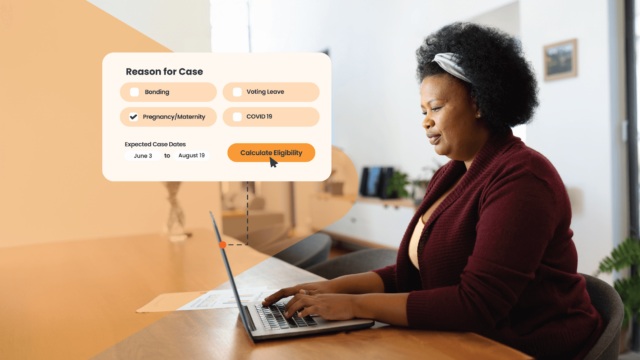


According to the CDC, one in four American adults today live with a disability. The Department of Labor estimates that over 18.6 million people with disabilities are in the workforce. This gives HR professionals millions of reasons to consider ways to improve their ADA interactive processes with technology.
Using technology to improve your ADA and accommodations management process does more than save time and ensure legal compliance. It also gives your HR team the time and tools to adopt an intentional approach to recruiting and accommodating individuals with disabilities.
There are big advantages to inviting people with disabilities into your workforce. Companies that actively seek to employ and support people with disabilities can see up to a 90% improvement in employee retention. They also enjoy higher revenues, net income, and profit margins.
So how can you set your business up to recruit and retain employees from this largely untapped workforce? While there are many parts of becoming a “disability inclusion champion,” one critical piece is making sure your workplace accommodations processes are as supportive and robust as possible.
At AbsenceSoft, we’ve helped over 200 customers streamline and automate the way they manage workforce accommodations. In this article, we’ll share some new best practices for providing a seamless, supportive interactive process that benefits both employers and employees.
Note: The section below is an excerpt from our in-depth guide, Best Practices for Modern ADA and Accommodations Management. You can download a free copy today.
Some HR processes are more clearly defined and regulated by employment law or other company policies. However, the process for making workplace accommodations is much more flexible. Title I of the ADA requires employers and employees to engage in an “interactive process” to discuss, explore, implement, and monitor workplace accommodations.
At AbsenceSoft, we recommend using the following eight steps in your interactive process:
At its core, the interactive process is really just a series of conversations. You should first meet with each employee to understand their situation fully, including the core functions of their job. You may also need to meet with their manager, co-workers, healthcare providers, and others from across your organization. For example, if an employee requests specialized computer equipment to perform their job more easily, you could include a representative from IT in the interactive process.
While employers are required to make reasonable accommodations for employees with disabilities, there really aren’t strict laws defining exactly what “reasonable” means. This is why the interactive process is so important, because the factors that determine if a request is reasonable change from case to case.
It helps to have the employee themselves suggest a reasonable accommodation, because those are the ones that are likely to “stick” in the long run. You are also allowed to reach out to healthcare providers directly during the interactive process. Ask them for medical documentation about the employee’s capabilities and limitations, and any suggestions they might have for an accommodation.
As you are evaluating options for an accommodation, you want to be sure it doesn’t put an undue hardship on the business. While you want to do everything you can to enable each employee to be productive and successful, an accommodation shouldn’t be extremely difficult or expensive to implement.
There are many ways to accommodate employees with disabilities, from a shift in a work schedule to an inexpensive piece of equipment. Be open to exploring different possibilities and options to find an accommodation that makes sure the employee can perform the essential functions of their job.
After you’ve implemented a workplace accommodation, we recommend establishing a regular cadence for checking in with the employee. This can vary a lot depending on what type of accommodation is being made. For example, if someone has a lifting restriction due to an injury, you would need to check in more frequently with both the employee and their healthcare provider throughout their recovery. Or, if an accommodation is permanent, such as a piece of equipment, you may want to wait to follow up for six months or more.
As you monitor an accommodation, make sure you evaluate how well it is working for the employee. You should also evaluate if it is working well for managers, co-workers, or others that might be impacted by the accommodation. Finally, you should check to see what effects, if any, the accommodation is having on the business as a whole.
Accommodation management technology like AbsenceSoft provides HR professionals with a consistent, repeatable way to manage the interactive process for every request. The system becomes a centralized location that can document every step in the interactive process—conversation notes, rationale for decisions, every completed form, and more. You end up with a thorough audit trail and record of the entire process you can review at any time.
Automatically generated checklists make sure you complete each part of the process for every case. This is especially helpful if you have multiple interactive processes happening at the same time. You can also set up automated follow-up reminders to yourself and the employee to help keep the process on track.
By centralizing case data, automating reminders, and providing templated checklists, accommodation management software like AbsenceSoft reduces the time spent on administrative tasks by 59%.
Having space in HR’s schedule for longer, more productive conversations sets the entire ADA interactive process up for success. Employees feel heard and valued, and everyone involved has more time to explore options and think through how best to implement each accommodation.
To learn how software can transform the way you manage workplace accommodations, we invite you to schedule a demo of AbsenceSoft. We also invite you to download our complete guide, Best Practices for Modern ADA and Accommodations Management, for even more advice and insights.